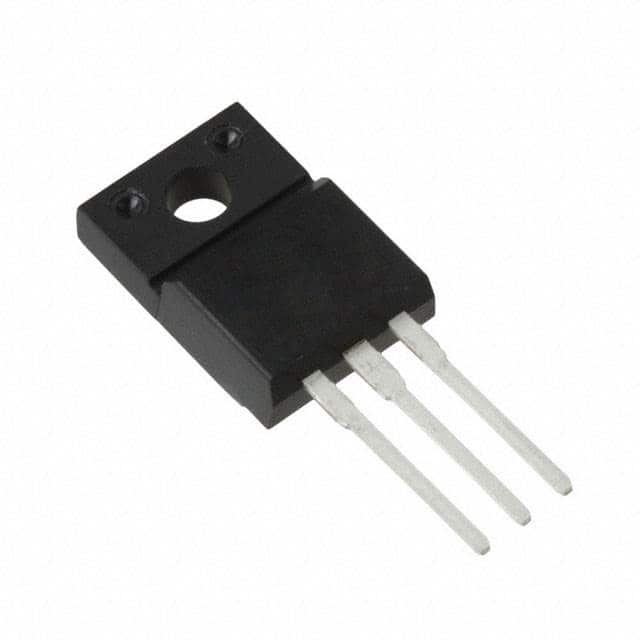Viz Specifikace pro podrobnosti o produktu.

2SA1931(NOMARK,A,Q) - Encyclopedia Entry
Product Overview
The 2SA1931(NOMARK,A,Q) is a semiconductor device belonging to the category of PNP transistors. It is commonly used in electronic circuits for amplification and switching purposes due to its specific characteristics. This transistor comes in a small package and is widely utilized in various electronic applications.
Basic Information
- Category: PNP Transistor
- Use: Amplification and Switching
- Characteristics: Small package, high gain, low noise
- Package: TO-220F
- Essence: Semiconductor device for electronic circuits
- Packaging/Quantity: Typically available in reels or tubes containing multiple units
Specifications
- Collector-Base Voltage (VCBO): 160V
- Collector-Emitter Voltage (VCEO): 160V
- Emitter-Base Voltage (VEBO): 5V
- Collector Current (IC): 1A
- Power Dissipation (PD): 1W
- Transition Frequency (fT): 150MHz
- Operating Temperature Range: -55°C to 150°C
Detailed Pin Configuration
The 2SA1931 transistor has three pins: 1. Collector (C) 2. Base (B) 3. Emitter (E)
Functional Features
- High voltage capability
- Low saturation voltage
- Fast switching speed
- Low noise
Advantages and Disadvantages
Advantages
- Suitable for high-voltage applications
- Low power dissipation
- Wide operating temperature range
Disadvantages
- Limited current handling capacity compared to some alternatives
- Sensitive to overvoltage conditions
Working Principles
The 2SA1931 operates based on the principles of PNP transistor action, where the flow of current is controlled by the voltage applied at the base terminal. When a small current is applied to the base, it allows a larger current to flow from the collector to the emitter, enabling amplification and switching functions.
Detailed Application Field Plans
The 2SA1931 is commonly used in audio amplifiers, voltage regulators, and power management circuits due to its high voltage capability and low noise characteristics. Additionally, it finds application in electronic control systems and industrial automation equipment.
Detailed and Complete Alternative Models
Some alternative models to the 2SA1931 include: - 2N5401 - BC557 - MPSA92 - KSC1845
In summary, the 2SA1931(NOMARK,A,Q) PNP transistor offers high voltage capability, low power dissipation, and fast switching speed, making it suitable for various electronic applications ranging from audio amplifiers to industrial control systems. While it has certain limitations in current handling and sensitivity to overvoltage conditions, it remains a popular choice in the realm of electronic circuit design.
Seznam 10 běžných otázek a odpovědí souvisejících s aplikací 2SA1931(NOMARK,A,Q v technických řešeních
What is the maximum collector current (IC) of 2SA1931?
- The maximum collector current (IC) of 2SA1931 is 1.5A.
What is the maximum collector power dissipation (PC) of 2SA1931?
- The maximum collector power dissipation (PC) of 2SA1931 is 20W.
What is the voltage rating for 2SA1931?
- The voltage rating for 2SA1931 is 160V.
What are the typical applications of 2SA1931?
- 2SA1931 is commonly used in audio amplifier circuits, power supply circuits, and general electronic applications.
What is the pin configuration of 2SA1931?
- 2SA1931 has a standard Emitter-Base-Collector pin configuration.
Is 2SA1931 suitable for high-frequency applications?
- No, 2SA1931 is not typically recommended for high-frequency applications due to its characteristics.
What are the temperature specifications for 2SA1931?
- The operating temperature range for 2SA1931 is typically -55°C to 150°C.
Can 2SA1931 be used as a switch in electronic circuits?
- Yes, 2SA1931 can be used as a switch in low-power electronic circuits.
Does 2SA1931 require a heat sink for certain applications?
- Yes, for applications where the power dissipation approaches the maximum rating, a heat sink may be necessary.
Are there any common failure modes associated with 2SA1931?
- Common failure modes for 2SA1931 include thermal runaway under high load conditions and breakdown due to overvoltage. Proper circuit design and protection measures should be implemented to mitigate these risks.

